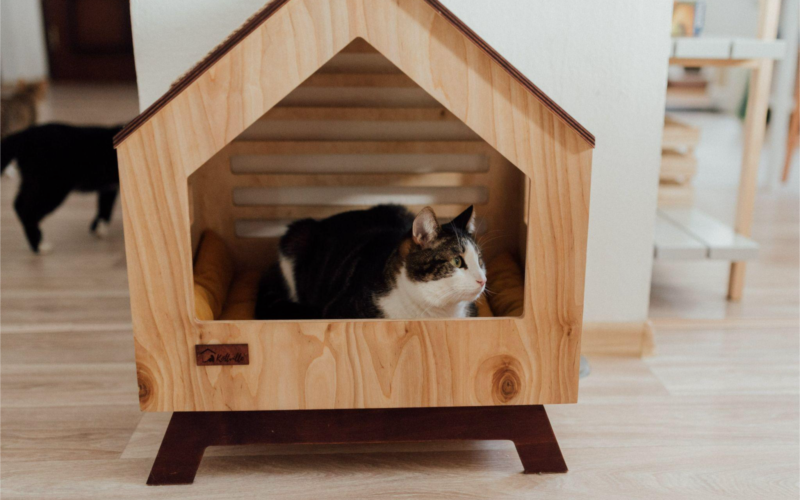Renting out a space in your home can be a great way to earn extra income, but when you add pets into the equation, things can get a bit trickier. As a landlord or a homeowner, it’s crucial to ensure that both your property and your tenants (including the furry ones) are well taken care of.
1. Understand the Benefits and Challenges
There are a lot of benefits that come with allowing pets into your home, especially if you’re renting in busy cities like Dallas, New York, or Boston. Here are just a few.
- Broader Tenant Pool – If you have pets or allow pets in your home, this can make your property more appealing to a wider range of potential renters – especially when a lot of property owners out there won’t accept pets or ask for huge deposits to cover any damage.
- Higher Rent Potential – You may be able to charge a bit more for pet-friendly accommodations.
- Longer Tenancies – As mentioned above, pet owners often find it hard to locate pet-friendly properties, so they’re more likely to stay longer once they find one.
But renting with pets isn’t all plain sailing. Here are some challenges you might encounter.
- Potential Damage – Pets can cause damage to your property, from scratched floors to chewed furnishings.
- Noise Issues – Barking dogs or loud birds can be a concern, especially in multi-tenant buildings.
- Allergies and Fears – Future tenants may have allergies or fears related to certain animals.
2. Create a Pet Policy
If you choose to allow pets into your home, you’ll need a clear pet policy. Here are some of the things it should include.
- Types and Sizes of Pets Allowed – Specify if you’re only comfortable with certain types or sizes of pets. For example, will you allow cats and not dogs? Do you draw the line at rabbits?
- Pet Deposit or Pet Rent – Consider a refundable pet deposit or additional pet rent to cover potential damages. However, be cautious because too high of an ask may deter potential renters rather than encourage them to rent with you.
- Number of Pets – Set a reasonable limit on the number of pets allowed.
- Behavior Requirements – Include expectations regarding pet behavior, such as leash and noise control. However, keep in mind that pets can be unpredictable at times.
3. Pet-Proof Your Property
Here are some things you can do to minimize potential damage.
- Choose Durable Materials – Opt for hard-surface flooring instead of carpet. Use paint that can withstand frequent cleaning, as it’s even more important to keep on top of hygiene if you have pets.
- Secure Outdoor Spaces – If you have a yard, make sure it’s fenced so there’s no chance of escape.
- Provide Pet Amenities – Consider adding pet-friendly features like a cat flap or a designated area to clean up mucky pups.
4. Regular Maintenance and Inspections
Schedule regular property inspections to check for pet-related damage and stay on top of maintenance issues, like flea infestations.
5. Foster Good Communication
It’s important to encourage tenants to communicate any pet-related issues as quickly as possible so they can be fixed. Share information about local pet services, like vets, groomers, or dog parks. You can also ask for feedback from tenants about how to improve the pet-friendliness of your property.
6. Handling Complaints and Issues
Address complaints as quickly as possible, especially those related to noise or aggressive behavior. If conflicts arise between tenants due to pets, try to mediate fairly so things don’t get out of hand. It’s also important to be aware of local ordinances and laws related to pets and rental properties.
7. Marketing Your Pet-Friendly Property
- Highlight Pet-Friendly Features – When writing up your listings, mention aspects that will make your property especially appealing to pet owners. For example, do you have a big garden or plenty of space?
- Use Real Photos: Show pictures of pet-friendly features in your property to build trust.
- Network with Pet Communities: You could even put your listing in local pet owner groups or forums – especially since finding pet-friendly properties can be tricky for pet owners.
8. Emergencies
It’s important to provide tenants with information on what to do with pets in case of an emergency. You can also keep a list of emergency contacts, including local animal shelters and 24-hour vet clinics.
9. Foster a Pet-Friendly Community
Establish community rules that promote a respectful and safe environment for all residents, including pets. You could even consider organizing pet-friendly events to build community among tenants.
10. Legal Considerations
- Fair Housing Act – Be aware of the Fair Housing Act, especially concerning service and emotional support animals.
- Insurance – Make sure your insurance covers damage caused by pets and liability for pet-related incidents. This will give you peace of mind, no matter which furry friend enters your home.
Conclusion
Renting out a property to tenants with pets requires a bit more effort and planning, but it can be incredibly rewarding. By creating a welcoming environment for both humans and animals, you’re not just renting out a space – you’re helping to build a home. With the right strategies in place, you can enjoy the financial benefits of a rental property while also providing a much-needed service to pet owners. Remember, a pet-friendly rental isn’t just a property choice; it’s a lifestyle choice that can lead to longer, happier tenancies.



